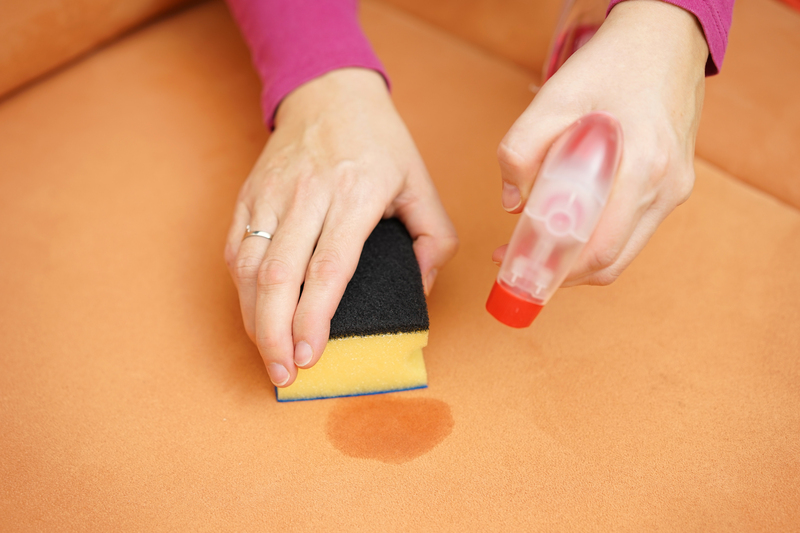Air Quality as a Key Ingredient in Healthy Homes and Offices
Posted on 03/07/2025
Air Quality: The Cornerstone of Healthy Living Spaces
Air quality has evolved from being an afterthought to a fundamental consideration in the creation of healthy homes and offices. With more research pointing to the crucial impact of the air we breathe on our well-being, it is becoming increasingly evident that maintaining high-quality indoor air should be at the top of our priorities. Why? Because indoor environments often host a plethora of pollutants that are invisible -- yet detrimental -- to our health.

Understanding Indoor Air Quality (IAQ): What Does It Mean?
To appreciate the significance of indoor air quality, or IAQ, we must understand what defines it. Simply put, IAQ refers to the condition of air within and around buildings and structures, as it relates to the health and comfort of building occupants. It's a blend of several factors including:
- The concentration of pollutants such as dust, pollen, mold spores, and volatile organic compounds (VOCs)
- The level of humidity indoors
- The effectiveness of ventilation
- Presence of chemicals from household products and furnishings
Each of these elements plays a crucial role in shaping the quality of air in homes and offices. Poor IAQ can lead to a range of health problems -- sometimes severe -- and significantly impact productivity, comfort, and even property value.
Why Air Quality Matters in Homes and Workspaces
On average, people spend about 90% of their time indoors. This means the quality of your indoor environment directly affects your daily health and wellness. Favorable air quality can lead to:
- Improved respiratory health and reduced risk of chronic diseases (like asthma and allergies)
- Enhanced concentration, productivity, and cognitive function
- Better sleep quality in homes
- Decreased absenteeism and higher morale in offices
Conversely, poor indoor air quality has been linked to symptoms like headaches, fatigue, shortness of breath, sinus congestion, coughing, and more severe long-term conditions. Children, elderly, and those with existing health issues are particularly vulnerable to the effects of compromised air.
Main Sources of Indoor Air Pollution
1. Outdoor Pollutants
Many times, contaminants from outside intrude into our indoor spaces. These include vehicle emissions, pollen, and industrial pollutants that enter through open windows, doors, and ventilation systems.
2. Indoor Activities and Furnishings
- Cooking and heating: Gas stoves, ovens, and fireplaces emit carbon monoxide and nitrogen dioxide.
- Smoking: Tobacco smoke is a well-known source of carcinogens and particulates.
- Cleaning products and air fresheners: Many cleaning supplies release VOCs that accumulate over time.
- Furniture and carpets: Some new items emit formaldehyde and other chemicals ('off-gassing') that can linger for years.
3. Biological Contaminants
Mold, mildew, pet dander, dust mites, and bacteria all thrive in enclosed spaces--especially where moisture is present. Their microscopic spores and particles are common triggers for asthma and allergic reactions.
4. Building Materials and Construction
Older buildings may hide hidden dangers, including asbestos, lead-based paints, and other hazardous materials. Modern finishes, if not carefully selected, can also leach harmful chemicals into the air.
Measuring and Monitoring Air Quality at Home and In the Office
Given these risks, how do you know if your home or office has healthy air? Monitoring indoor air quality is key.
Indicators of Poor Air Quality
- Frequent headaches or respiratory problems among occupants
- Persistent musty or chemical odors
- Visible mold growth or water damage
- Static air or lack of air movement
Tools for Air Quality Assessment
You can use dedicated IAQ monitors that track parameters like:
- Particulate matter (PM2.5 and PM10)
- Carbon dioxide (CO2)
- Carbon monoxide (CO)
- Humidity and temperature
- Levels of VOCs and formaldehyde
Most modern IAQ devices provide real-time readings and can alert you when air quality deteriorates, enabling you to take immediate action.
Strategies for Improving Indoor Air Quality
1. Ensure Proper Ventilation
One of the most effective ways to enhance air quality in homes and offices is by increasing ventilation. Good airflow helps dilute indoor pollutants and brings in fresh air from outside. Options include:
- Opening windows and doors when weather and air quality allow
- Using exhaust fans in kitchens and bathrooms to remove humidity and pollutants
- Installing mechanical ventilation systems such as HRVs or ERVs
2. Regular Cleaning
Dust, pet dander, and mold are easier to manage with consistent cleaning. Simple steps include:
- Vacuuming with a HEPA filter vacuum cleaner
- Dusting surfaces using damp cloths
- Washing bedding and fabrics frequently
- Cleaning air ducts and replacing HVAC system filters as recommended
3. Control Humidity
Maintaining indoor humidity between 30% and 50% can suppress dust mites, and mold growth, and keep the environment comfortable. Depending on your climate, consider using dehumidifiers or humidifiers.
4. Eliminate Pollutant Sources
Take a proactive approach to reduce sources of pollution:
- Avoid smoking indoors
- Choose unscented or natural cleaning products
- Opt for zero-VOC paints and finishes
- Air out new furniture before bringing it inside
5. Use Air Purifiers
High-efficiency air purifiers with HEPA filters can capture most airborne particles, including pet dander, pollen, and some bacteria and viruses. Advanced models even tackle VOCs and odors, further enhancing your indoor environment.
The Role of Plants in Air Quality
Adding houseplants can contribute to cleaner air. Some studies have demonstrated that certain plants -- such as spider plants, peace lilies, and Boston ferns -- naturally absorb small amounts of airborne toxins. While plants alone can't replace robust filtration or ventilation, they're a beneficial addition to any healthy home or office.
Maintaining Air Quality in Modern Offices
Office-Specific Air Quality Challenges
Open-plan offices, high occupancy levels, and extensive use of electronics can pose unique challenges. Consider these strategies for improved office air:
- Routine maintenance of building HVAC systems
- Use of low-emitting office furniture and materials
- Regulating indoor plants and green partitions to help absorb CO2
- Encouraging employees to report irregularities such as water leaks or unusual odors immediately
Additionally, offices can use "smart building" technology -- automation for ventilation, humidity control, and air purification -- for an even more effective approach.
The Impact of Air Quality on Health and Productivity
The scientific evidence is clear: People working in environments with high indoor air quality experience:
- Up to 50% fewer headaches and allergic symptoms
- Higher cognitive test scores
- Reduced sick days and greater job satisfaction
Equally, home inhabitants in healthy air environments report more restful sleep and improved mental health. Children growing up in clean-air homes are less likely to develop asthma or respiratory issues, offering lifelong advantages.

Frequently Asked Questions About Air Quality in Homes and Offices
How often should I check my indoor air quality?
For optimal results, use an IAQ monitor that provides continuous data. If not, schedule air quality tests at least once a year, or after renovations, new furniture installations, or changes in household health.
Can opening windows worsen air quality?
Opening windows is excellent for ventilation when outdoor air quality is good. However, during heavy pollution days, wildfires, or high pollen counts, it's best to keep them closed and rely on internal air filtration systems instead.
What's the most effective way to improve air quality quickly?
Use an air purifier with a HEPA filter in commonly used areas, avoid burning candles and incense, stop smoking indoors, and improve ventilation.
Conclusion: Prioritizing Air Quality for a Healthier Future
It's clear that air quality is an essential component of healthy homes and offices. By proactively addressing indoor pollutants, optimizing ventilation, and employing modern monitoring technologies, anyone can create a space that fosters well-being, focus, and happiness. Make air quality a priority in your next home improvement or office upgrade: the investment in better indoor air pays off in comfort, health, and productivity for years to come.
Remember: Breathable, clean air isn't just a luxury--it's a critical ingredient for a vibrant, thriving indoor environment.




